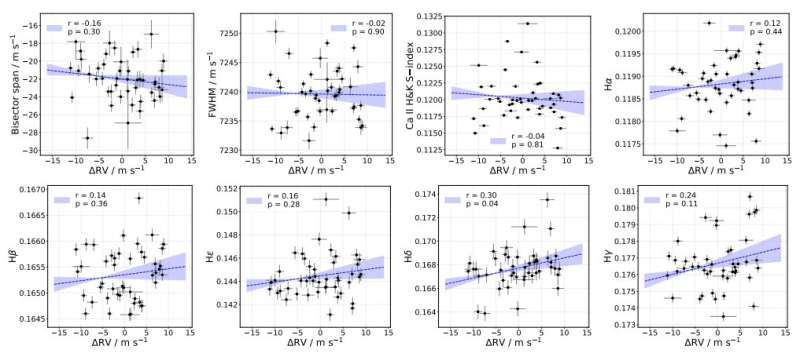March 7, 2023 report
This article has been reviewed according to Science X's editorial process and policies. Editors have highlighted the following attributes while ensuring the content's credibility:
fact-checked
preprint
trusted source
proofread
Planets similar to Neptune and Jupiter observed circling a sun-like star

A small international team of space scientists has discovered a pair of planets that bear a striking resemblance to Neptune and Jupiter circling a star similar in nature to our sun. The group has published their findings on the arXiv pre-print server.
As the search for extraterrestrial life continues, scientists have continually expanded the list of possible factors that might play a role in its existence. Some have noted, for example, that Earth is not alone in the solar system—there are seven other planets that may or may not have played a role in the development of life on Earth—and also an unknown number of smaller bodies.
Prior research has shown also that large planets such as Jupiter might have played a major role in the development of life on Earth by protecting the inner planets from strikes by smaller space bodies because its gravity diverts many such objects. It also may have played a role in the development of Earth by flinging space rocks toward the sun that eventually became the material from which Earth was made.
Such ideas have led some in the space community to look beyond a single, Earth-like planet and to look instead for star systems that resemble those in our own solar system. In this new effort, the researchers set their sights on a star called HIP 104045—it is located approximately 175 light years from Earth and also has two planets that resemble planets in our own solar system. One of them has a mass approximately half that of Jupiter; the other 2.5 times the mass of Neptune.
The research team also points out that planets like Jupiter are less common than planets like Earth, which, they note, suggests that it might make sense to look for star systems with planets like Neptune and Jupiter and then check to see if they have smaller, Earth-like planets. They also suggest that HIP 104045 is a good place to start. In addition to good composition, the star is roughly the same age as the sun and is close to the same size and luminosity.
More information: Thiago Ferreira et al, A Jupiter analogue and a cold Super-Neptune orbiting the solar-twin star HIP 104045, arXiv (2023). DOI: 10.48550/arxiv.2303.01358
Journal information: arXiv
© 2023 Science X Network





















